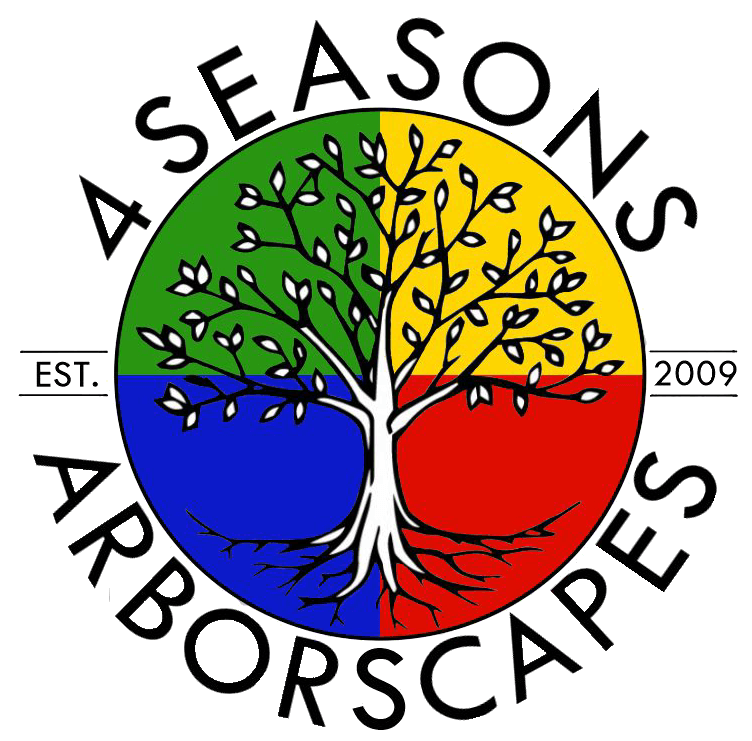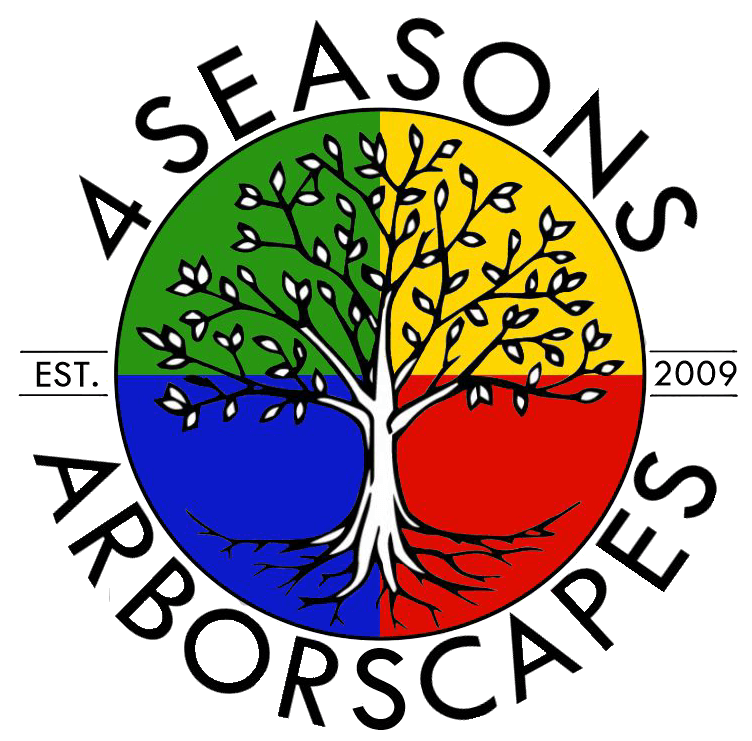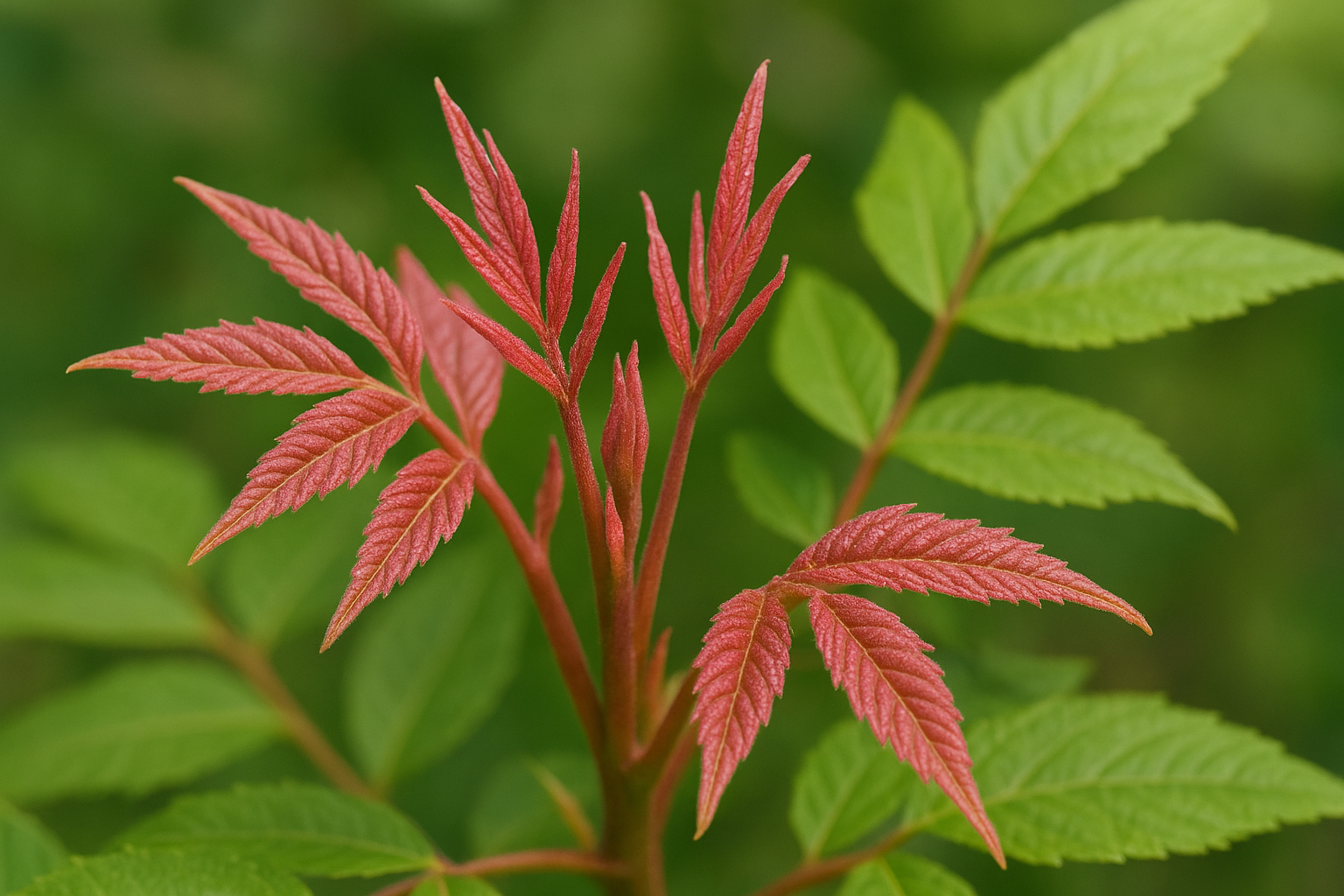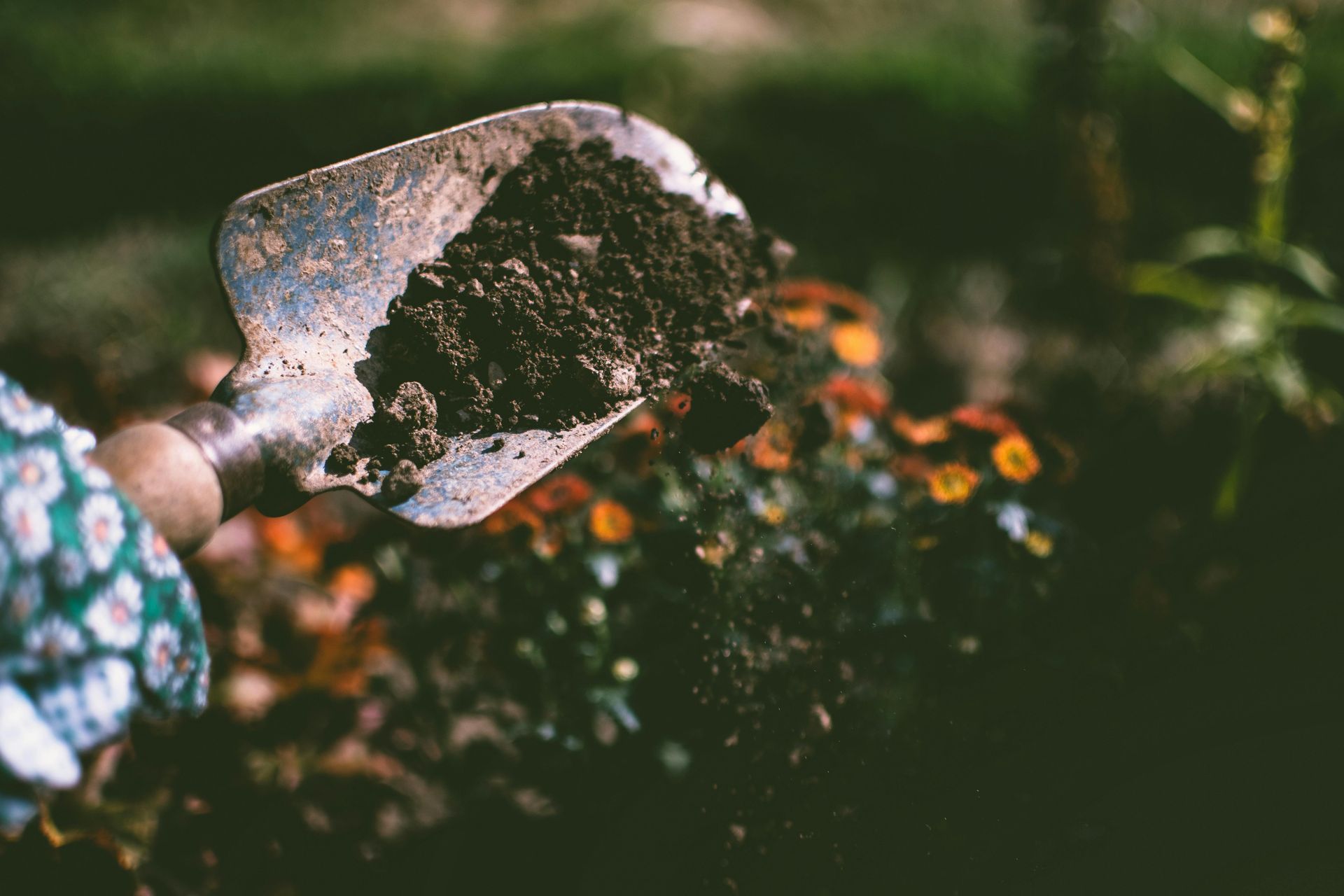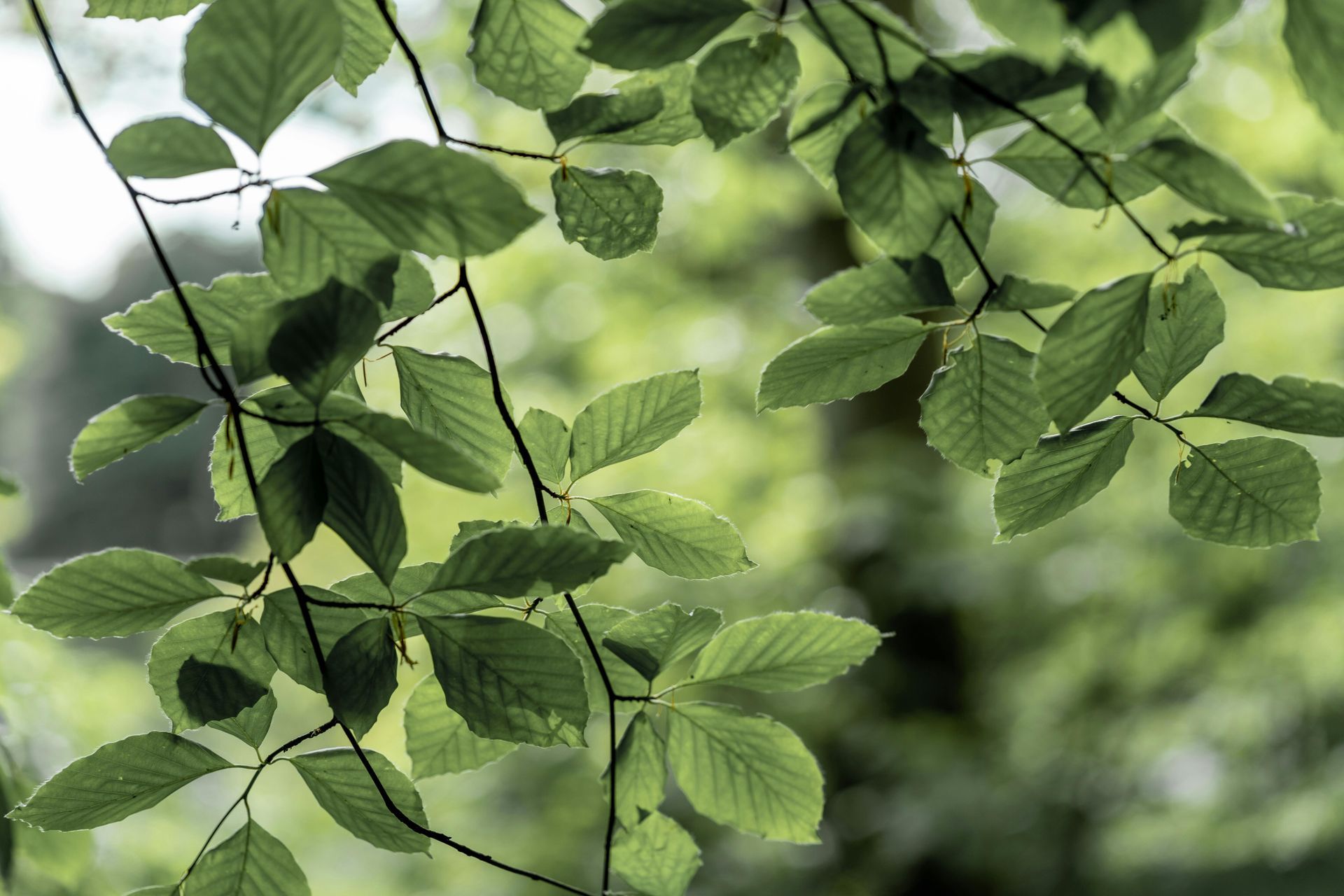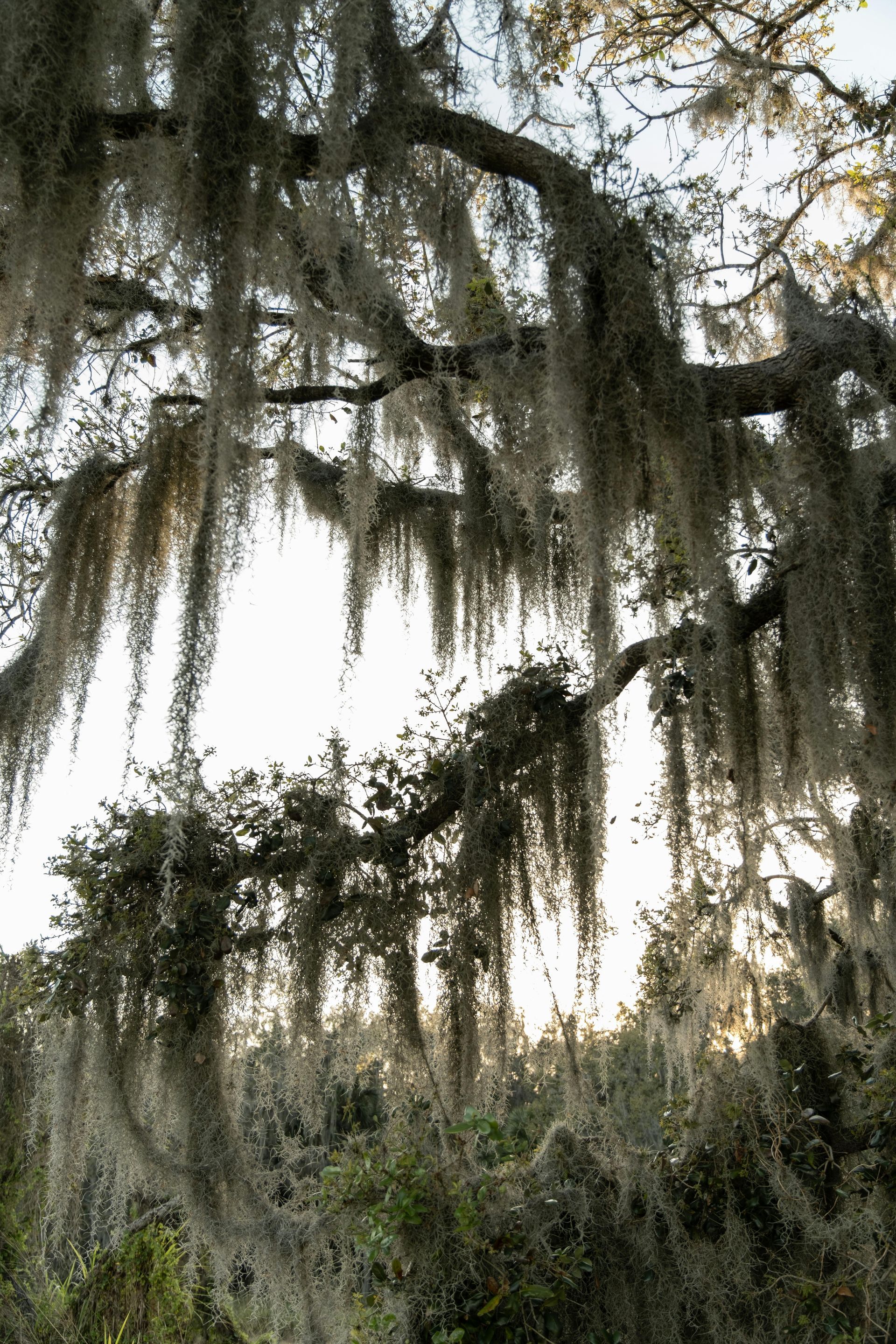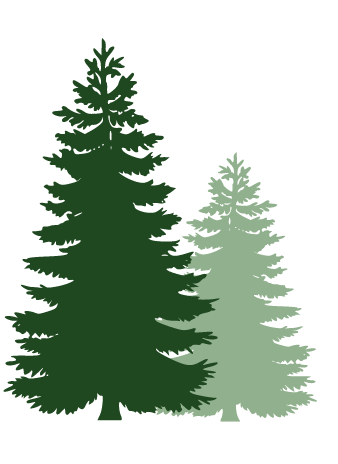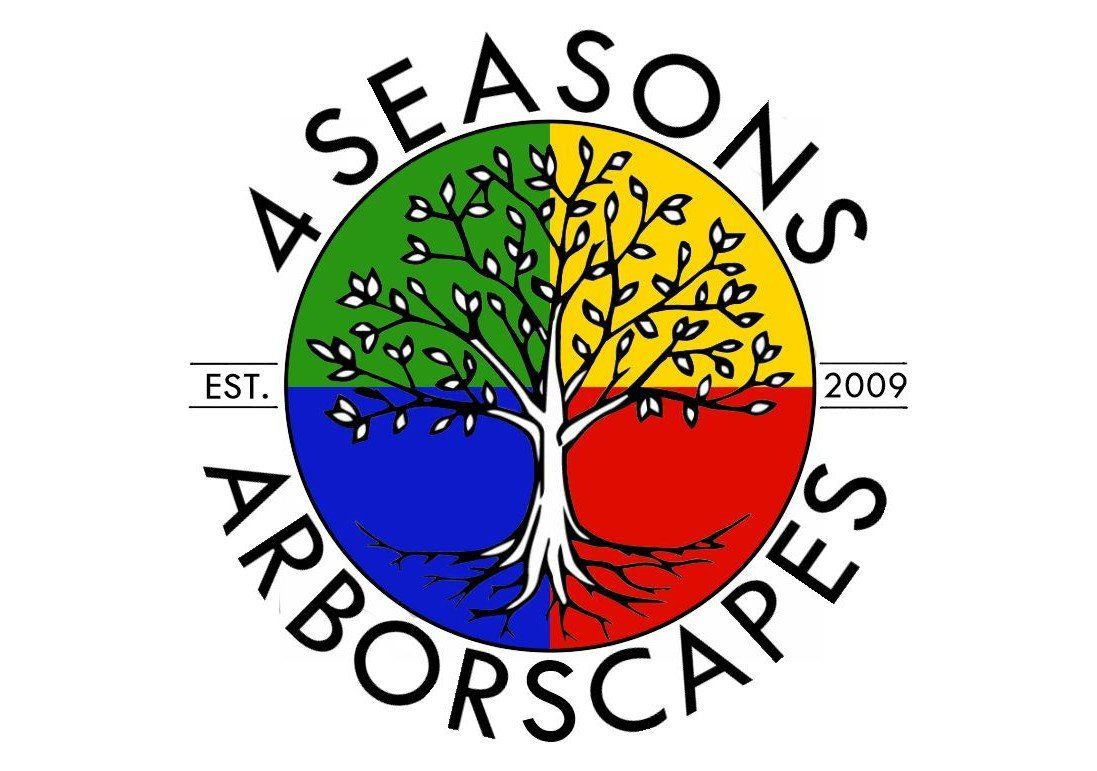Top Trees to Plant for Winter Color
Even in the cold, barren months of winter, certain trees can brighten your landscape with vibrant hues and textures. If you're looking to add year-round beauty to your garden or yard, consider these top trees known for their stunning winter color.
1. Red Twig Dogwood (Cornus sericea)
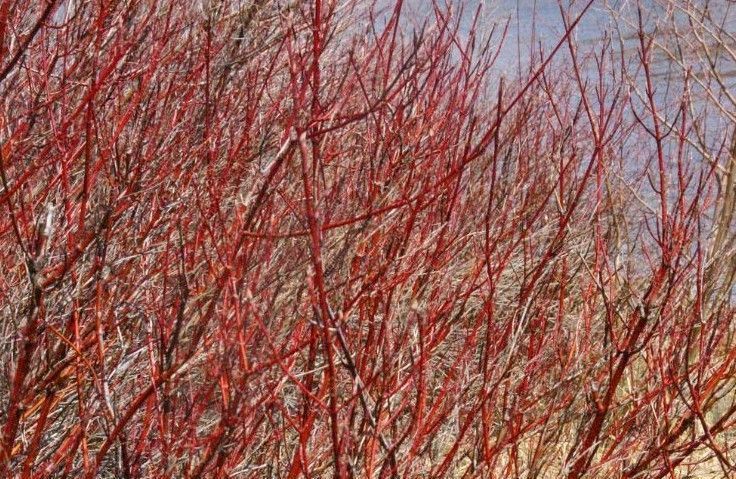
The red twig is a shrub that grows to height of 6 to 9 feet, and spreads about 6 to 9 feet wide. It forms a dense, rounded shape with a spreading habit. The most striking feature of the red twig dogwood is its bright red stems, which stand out especially in the winter when the leaves have dropped. The color intensifies as the weather cools, making it a popular choice for winter gardens. Its simple, opposite leaves are oval-shaped, 2 to 4 inches long, and turn an attractive reddish-purple in the fall. The shrub produces small, creamy white flowers in flat-topped clusters (called cymes) in late spring to early summer. The flowers are not particularly showy but are appealing to pollinators. The flowers are followed by small, white or blue-tinged berries (drupes) in late summer. These fruits are a favorite food source for birds and wildlife. The bark is smooth when young but becomes rougher as the plant ages.
The red twig dogwood thrives in full sun to partial shade, though more sunlight enhances the vivid red color of the stems. It prefers moist, well-drained soil but can tolerate a variety of soil types, including clay and sandy soils. This plant prefers consistently moist soil but can handle short periods of drought once established. The red twig dogwood is a fast-growing shrub, with a growth rate of up to 1 to 2 feet per year in optimal conditions.
Pruning is essential to maintain the vibrant red stems. Older stems tend to lose their color, so annual pruning of about one-third of the oldest branches in late winter or early spring promotes new growth and more vivid coloration. For the best winter display, you can cut the entire shrub back to the ground every two to three years (known as coppicing). This encourages the growth of younger, more colorful stems. Other than occasional pruning, red twig dogwoods are relatively low-maintenance plants. They are resistant to most pests and diseases and can thrive with minimal care.
The berries produced by this shrub provide an important food source for birds like robins, bluebirds, and cedar waxwings. Its dense branches offer shelter and nesting spots for small animals and birds. Its dense root system makes this shrub ideal for stabilizing banks and preventing erosion along streams and rivers. The small flowers attract bees and other pollinators, supporting local ecosystems.
Some things to consider:
- Red twig dogwoods tend to spread via underground suckers, which can make them somewhat aggressive if not managed. Regular pruning and root barriers can help control unwanted spread.
2. Paperbark Maple (Acer griseum)
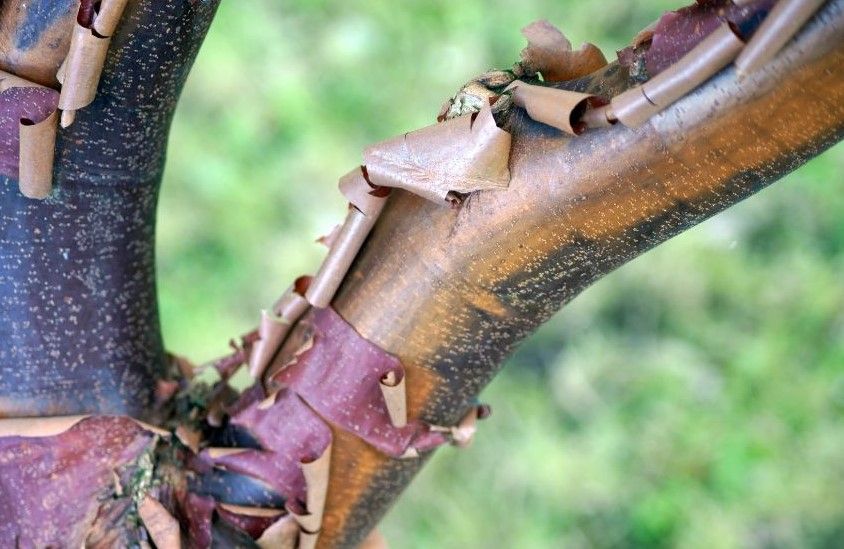
The paperback maple is a unique and highly desirable tree known for its striking, exfoliating bark and brilliant fall color. Some popular varieties include Cinnamon Flake, which has particularly rich cinnamon-colored bark and an upright growth habit, and Copper Ruffles, known for its slightly more intense fall color and a ruffled texture to the bark.
This small to medium-sized deciduous tree typically grows to 20-30 feet tall with a spread of 15-25 feet. It is considered a slow-growing tree (6-12 inches of growth per year) but can eventually reach 35 feet under optimal conditions. The most notable feature of the paperbark maple is its cinnamon to reddish-brown bark, which peels away in thin, papery sheets. This peeling bark is highly ornamental and provides year-round interest, particularly in winter when the tree is leafless. The leaves are trifoliate (three leaflets per leaf), with a medium to dark green color that turns to a brilliant mix of red, orange, and bronze in the fall. Each leaflet is about 3 inches long and has a slightly serrated edge. Small, inconspicuous yellowish-green flowers appear in late spring. While not particularly showy, they are followed by winged seeds (samaras), typical of maple species. The tree produces paired samaras (winged seeds) that are about 1-1.5 inches long. These seeds mature in late summer and are dispersed by wind.
This maple species prefers full sun. It can tolerate some shade, but for the best bark color and fall foliage, more sunlight is preferable. The paperbark maple thrives in well-drained, slightly acidic soils. However, it is adaptable to a range of soil types, including clay, loam, and sandy soils. This tree prefers moderate moisture levels and should be watered regularly during dry periods. While it can handle some drought once established, it does best in consistently moist conditions.
The paperbark maple requires minimal pruning, only to remove dead or damaged branches. Its naturally attractive shape means it doesn’t need much intervention to maintain its form. If pruning is necessary, it should be done in late winter to early spring, before new growth begins. Adding organic mulch around the base of the tree helps retain moisture, improve soil health, and protect the shallow root system from extreme temperatures.
3. American Holly (Ilex opaca)
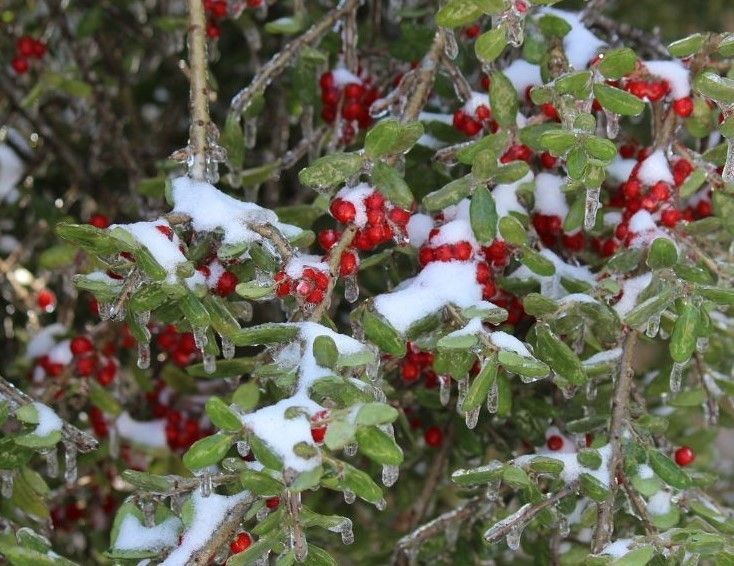
The holly has been a symbol of good fortune and protection in various cultures throughout history. In the United States, American Holly is closely associated with Christmas and winter holiday traditions. With its evergreen foliage and bright red berries, this classic winter tree provides both color and shelter for wildlife during the coldest months of the year.
The American holly typically grows 30-50 feet tall, with a spread of 18-40 feet. In ideal conditions, it can reach heights of up to 65 feet. The bark is smooth and light gray, providing a subtle contrast to the tree’s dark green leaves. The leaves are leathery, with a glossy, dark green color and spiny margins. They are oval-shaped and about 2-4 inches long. These evergreen leaves remain on the tree year-round, contributing to its ornamental value. In late spring, small white or greenish flowers appear. These flowers are not particularly showy but are vital for pollination and berry production. Bright red berries (drupes) are produced in late fall and persist through the winter. These berries are a key feature of the American holly and serve as a food source for wildlife.
American holly grows best in areas with ample sunlight but can tolerate some shade, particularly in warmer climates. The tree thrives in well-drained, slightly acidic soils; it is tolerant of sandy soils but can also grow in clay or loamy soils. American holly prefers moist soils but is relatively drought-tolerant once established. Regular watering is beneficial during dry periods, especially for young trees. It has a slow to moderate growth rate, adding about 6-12 inches per year under good growing conditions.
American holly benefits from light pruning to maintain shape, especially when used as a hedge or ornamental tree. Prune in late winter or early spring before new growth appears. The tree is generally low-maintenance, requiring little more than occasional pruning and regular watering for young trees
The berries of the American holly are an important food source for birds, such as robins, cedar waxwings, and bluebirds, as well as small mammals. The dense foliage provides excellent shelter and nesting sites for birds. The spiny leaves of the American Holly make it less appealing to deer, making it a suitable choice for areas where deer browsing is a concern.
4. Japanese Maple (Acer palmatum)
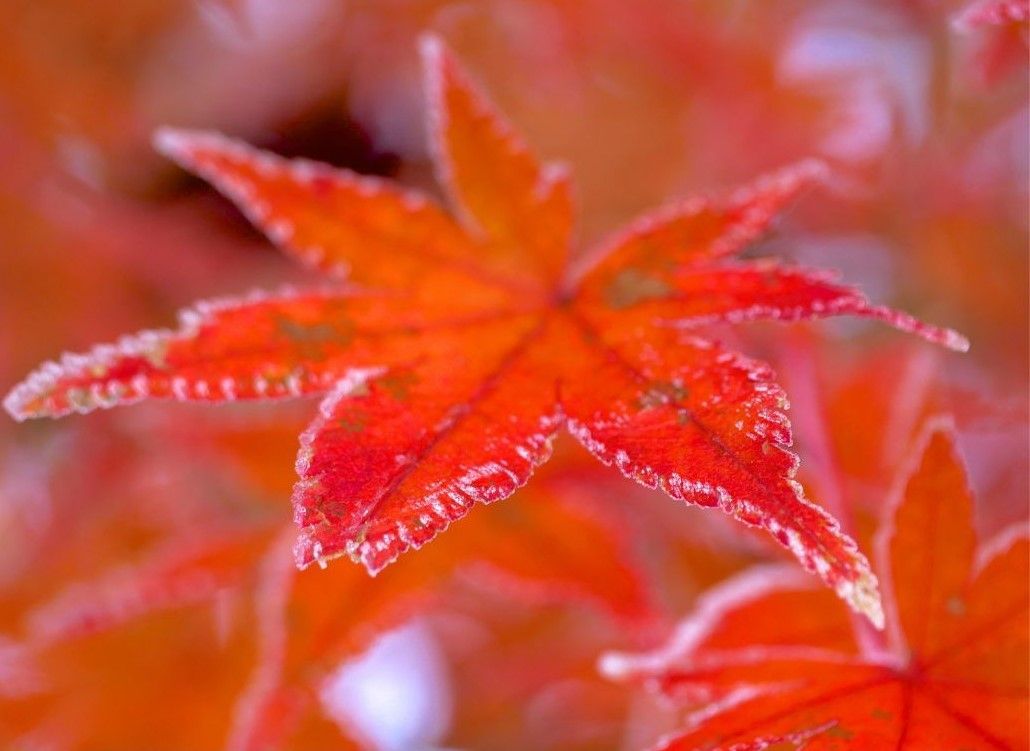
Many varieties of Japanese maple showcase red, orange, or purple bark in the winter, and their elegant branches offer striking silhouettes. Here are some of the more colorful cultivars:
- Bloodgood: One of the most popular varieties, known for its deep red leaves that hold their color well through the summer and turn bright crimson in fall.
- Crimson Queen: A weeping variety with lacy, red foliage that turns a vivid scarlet in the fall.
- Tamukeyama: Another weeping variety, known for its dissected leaves and deep purple-red color throughout the growing season.
- Sango-kaku: Also known as coral bark maple, this variety is famous for its bright coral-red bark in winter, offering year-round interest.
Japanese maples vary greatly in size, from 6-10 feet for dwarf varieties to 15-25 feet for taller varieties. Their spread is typically 10-15 feet, creating a rounded canopy. The bark is smooth and gray to brown, though some varieties display vibrant coral or red bark, ideal for adding winter interest to your landscape. The leaves are deeply lobed, resembling an open hand (hence the name "palmatum"). Leaf shapes and sizes vary by cultivar, but the foliage is typically delicate, with 5-9 lobes. Leaf color ranges from bright green to deep red, orange, or purple, depending on the variety and season. In the fall, the Japanese maple’s leaves transform into brilliant shades of red, orange, and yellow, making it a focal point in many gardens.
Japanese maples thrive in partial shade, though they can tolerate full sun in cooler climates. In hot climates, too much direct sunlight can scorch the delicate leaves, so it's best to provide some afternoon shade. These trees prefer well-drained, slightly acidic soils rich in organic matter. They do not thrive in waterlogged soils and may suffer from root rot if drainage is poor. Japanese maples need consistent moisture, especially in their early years. However, they are drought-tolerant once established. Japanese maples are slow-growing trees, generally adding about 1-2 feet of growth per year.
Pruning is typically minimal for Japanese maples, though it's best to remove any dead, damaged, or crossing branches. The best time to prune is in late winter or early spring before new growth begins. Over-pruning can damage the natural shape, so it’s best to prune conservatively. Mulching is beneficial to keep the soil moist and cool. A layer of organic mulch around the base helps retain moisture, regulate temperature, and suppress weeds. In hot climates, Japanese Maples need protection from strong afternoon sun and drying winds, which can cause leaf scorch. Placing them in sheltered spots or providing partial shade can prevent this.
While Japanese maples don't produce significant amounts of nectar or fruit, their structure provides shelter for birds and small wildlife.
5. Winterberry (Ilex verticillata)
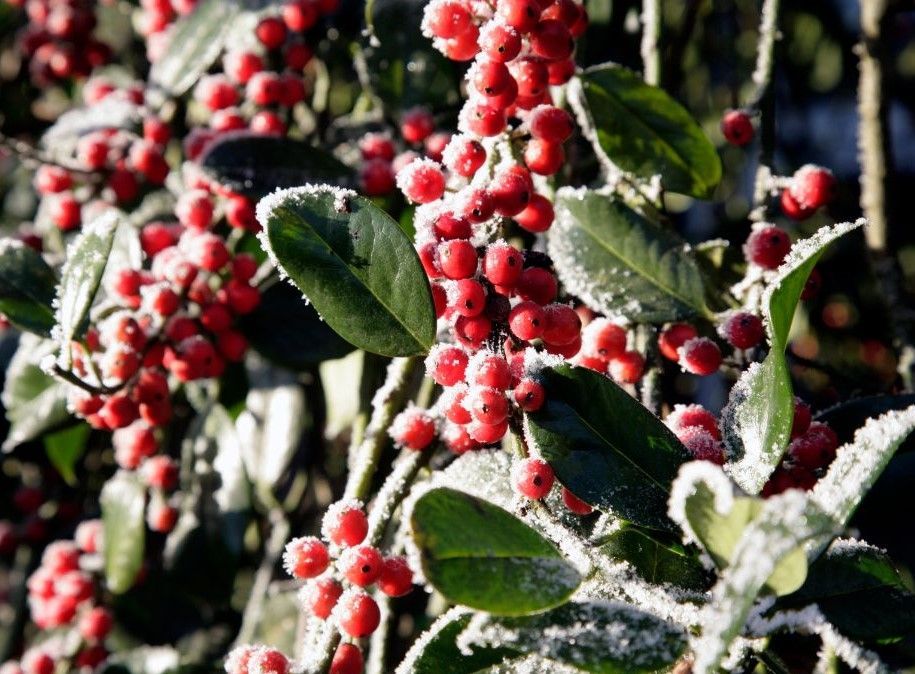
One of the primary reasons people plant Winterberry is for its berries, which provide a vibrant splash of red in the otherwise barren winter landscape. The berries persist through the cold months, offering both aesthetic value and wildlife benefits. It pairs well with evergreen shrubs and trees, providing contrast and interest during the colder months. There are several varieties of winterberry, including:
- Jim Dandy: (male) a common pollinator for early-blooming female cultivars like ‘Red Sprite’.
- Southern Gentleman: (male) works well for later-blooming female cultivars such as ‘Winter Red’.
- Red Sprite: (female) a dwarf variety known for its large, bright red berries.
- Winter Red: (female) known for heavy berry production and bright red fruit.
Winterberries typically grow as a multi-stemmed shrub, but they can be pruned to form a small tree. Most mature plants reach heights of 6-15 feet with a similar spread. The leaves are simple, dark green, and oval-shaped with a finely toothed margin. They turn yellow-green in the fall before dropping off the plant, making way for the bright red berries to stand out against the winter landscape. Winterberries produce small, inconspicuous white to greenish flowers in the spring. They are dioecious, meaning that male and female flowers are on separate plants. The most striking feature of Winterberry is its vivid red berries, which appear in late summer or fall and remain throughout the winter. Only female plants produce berries, and a nearby male plant is necessary for pollination.
Winterberry grows best in full sun to partial shade. It can tolerate a variety of light conditions, but more sun generally leads to better berry production. This plant prefers acidic, well-drained soil but is quite adaptable. It can tolerate wetter areas, even thriving in bogs, swamps, or along streams, making it an excellent choice for wet areas in the garden. Winterberry is highly tolerant of heavy, clay soils as well. While it can handle some drought once established, consistent moisture leads to healthier growth and better berry production.
Little pruning is necessary for winterberry, however, it can be pruned in early spring to maintain shape or control size. Removing any dead or damaged branches will help promote healthy growth.
Winterberry's berries provide a crucial food source for many bird species in late winter, when other food sources have been depleted. The plant also offers cover and habitat for small mammals. Winterberry’s root system can help stabilize soil, making it useful for planting on slopes or in areas prone to erosion.
Some things to consider:
- Winterberry berries are a valuable food source for birds, especially in late winter when other food sources are scarce. However, the berries are mildly toxic to humans.
6. Crepe Myrtle (Lagerstroemia spp.)
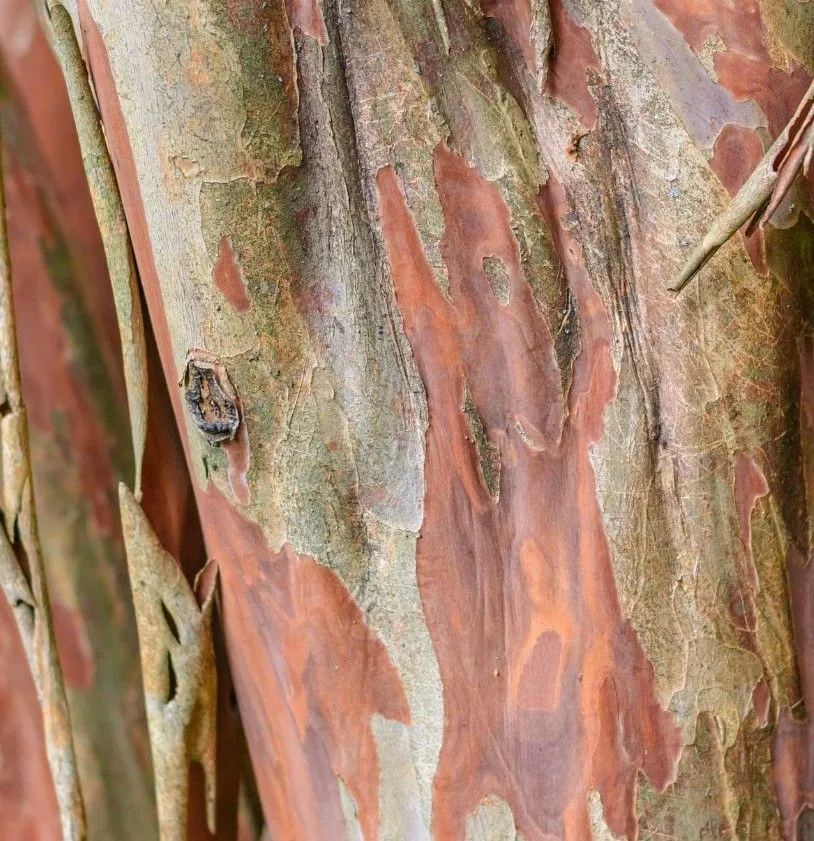
Known for its colorful, exfoliating bark that reveals shades of gray, orange, and brown, the crepe myrtle remains a striking feature in our winter landscapes.
Crepe (or crape) myrtles come in a wide range of sizes, from dwarf varieties (2-4 feet) to medium-sized shrubs (10-15 feet) to large trees that can grow over 30 feet tall. The leaves are small, oval, and typically dark green in color. In the fall, they transform into shades of yellow, orange, or red, providing additional seasonal interest. Crepe myrtles are best known for their stunning summer blooms, which can last for several months. The flowers are crinkled, resembling crepe paper, and come in various colors such as pink, purple, red, and white. The blooms grow in large clusters (panicles) at the tips of the branches. The bark is another attractive feature of the crepe myrtle; as it peels away in strips, it reveals smooth, mottled, and often multi-colored bark beneath. This exfoliating bark adds year-round interest, particularly in the winter.
Crepe myrtles thrive in full sun, needing at least 6 hours of direct sunlight each day to bloom well. They can tolerate light shade, but too much shade will result in fewer flowers. Although they can tolerate slightly acidic to alkaline soils, good drainage is essential to avoid root rot. While young, crepe myrtles need regular watering to establish their roots. Once mature, they are drought-tolerant, though occasional watering during extended dry periods will keep them looking their best.
Minimal pruning is required, but light pruning can help shape the tree and remove dead or weak branches. The key is not to over-prune, a practice sometimes referred to as "crepe murder," which can ruin the natural form of the tree. Pruning should be done in late winter or early spring before new growth begins.
The flowers of the crepe myrtle attract various pollinators, including bees and butterflies, making it a great plant for supporting local wildlife.
Check out A Guide to Crape Myrtles for an in-depth look at these beautiful trees.
References:
https://www.thespruce.com/red-twig-dogwood-shrubs-2132727
https://en.wikipedia.org/wiki/Cornus_sericea
https://www.thespruce.com/growing-the-paperbark-maple-acer-griseum-3269319
https://americangardener.net/american-holly/
https://www.gardenia.net/genus/acer-palmatum-japanese-maple
https://www.thespruce.com/winterberry-holly-shrubs-2131220
https://www.thespruce.com/crepe-myrtle-growing-guide-5210870
https://en.wikipedia.org/wiki/Lagerstroemia_indica
Images - Canva
Check out the latest:
